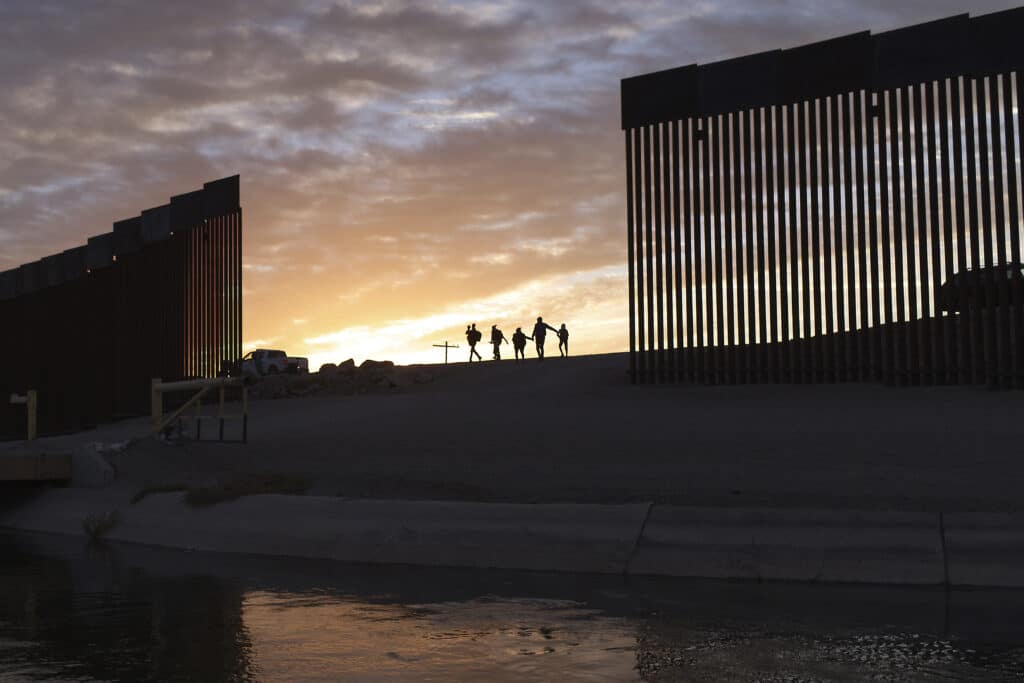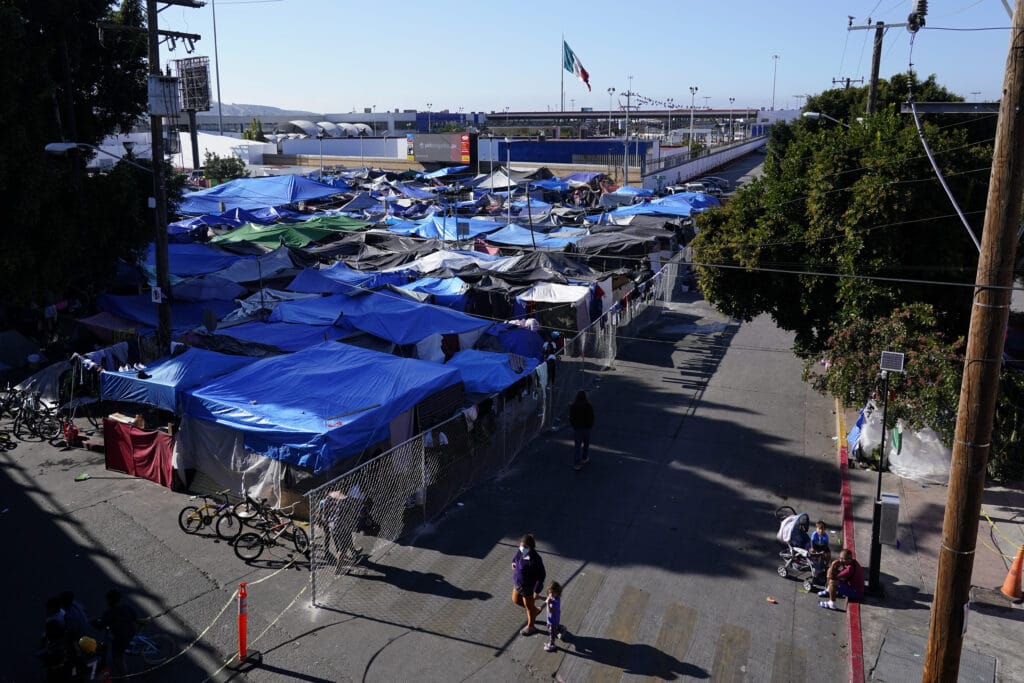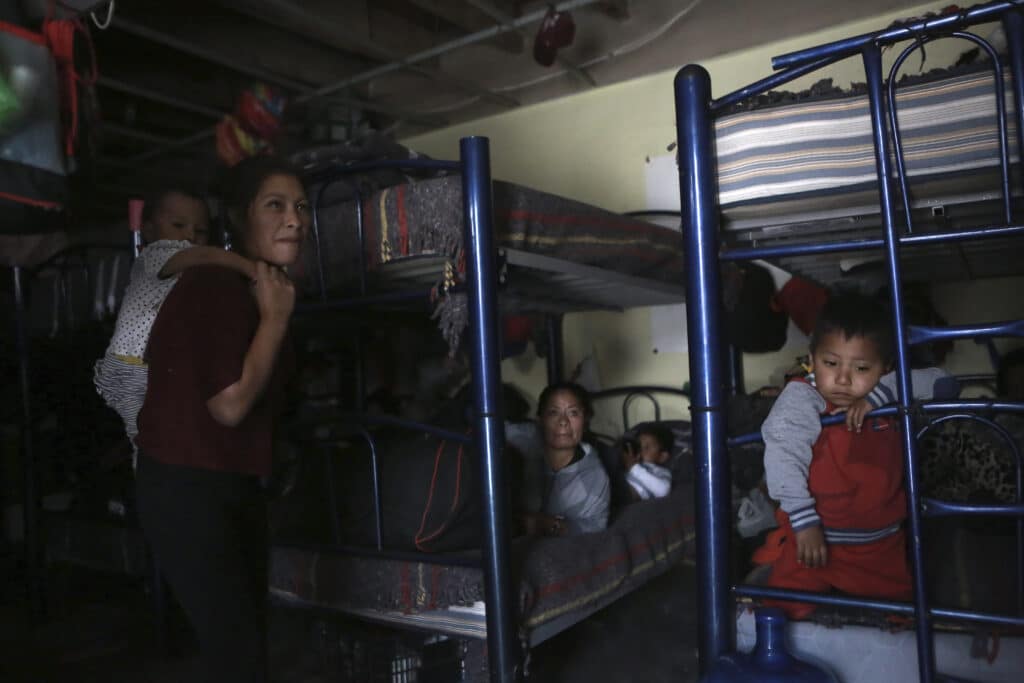The ban on asylum-seekers at the U.S-Mexico border on public health grounds, was imposed by former President Donald Trump, It will soon be ended by current President Joe Biden, but the question is if this is a good strategy or not, and unfortunately for Biden, he has to wait until the 2022 mid-term elections to find out. Immigration is a touchy subject these days, only because the Democratic party has been in full support of what can only be described as “illegal immigration,” and Joe Biden has proved he is not capable of properly dealing with the issue. As reported by the AP:
The Centers for Disease Control and Prevention announced Friday that it would lift the asylum ban, known as Title 42, next month
WASHINGTON (AP) — The ban on asylum-seekers at the U.S-Mexico border on public health grounds was imposed by a president who wanted to restrict immigration entirely. It will soon be ended by a president who is facing increasing pressure from within his own party to welcome immigrants.

The path ahead for President Joe Biden looks far from smooth. With the end of the ban on May 23, he faces an expected increase in migration at the border under a system incapable of managing such large migrant flows and buckling under a backlog of more than 1.7 million asylum cases.
Republicans are already eager to assign Biden blame for the expected images of thousands of people likely to be crammed into temporary border facilities.
The Centers for Disease Control and Prevention announced Friday that it would lift the asylum ban, known as Title 42, next month. The ban had become increasingly hard to justify as pandemic restrictions ended around the country.
Many Democrats and immigration advocates viewed it as nothing more than an excuse for the United States to avoid its moral and legal obligation to offer safe haven to asylum-seekers at the border.
By delaying the end of Title 42 for nearly two months, Biden appeared to be seeking a political balance between liberals who want the policy scrapped and moderates who have joined Republicans in supporting continued restrictions. He may end up satisfying neither.
The expected influx of migrants could create a political damaging crisis for Biden with the November midterm elections approaching. That debate will probably hinge more on partisanship than facts.
American attitudes on immigration are based on perception, not reality, said René D. Flores, a sociology professor at the University of Chicago who studies public opinion and immigration.
“It’s not about deciding what is the most sensible immigration policy,” he said. “It’s about managing public perception.”
The president has already faced withering criticism from both Democrats and Republicans over how he has managed immigration. Republicans say his push to repeal Trump-era restrictions has led to an increase in illegal crossings. Democrats have criticized the administration’s continued use of a policy that forces migrants back to Mexico to wait out their claims, even though that policy was reinstated by the Supreme Court.
An Associated Press-NORC Center for Public Affairs Research poll last year found that most Americans disapproved of how Biden had handled a sharp increase in migrant children and an influx of Haitian migrants at the U.S.-Mexico border. Approval of his other efforts on larger immigration policy fell short of other top issues.
Ryan Enos, a professor of government at Harvard University, doubted that the end of Title 42 would shift public opinion much, especially when views about immigration have become so polarized.
“Any issue besides the economy is going to be a marginal issue,” he said.

The seven-week gap between Friday’s order and the expiration of the asylum ban late next month is meant to allow officials time to increase staffing at the border, including erecting tents for an expected influx of asylum-seekers. It also allows for government officials to vaccinate more migrants at the border.
But in the interim, it creates a policy muddle. Nearly all migrants seeking to cross into the U.S. will be turned away under a health authority that American officials say is no longer necessary. It also gives opponents of ending Title 42 plenty of time to sue.
Republican Gov. Greg Abbott of Texas said Biden was refusing to listen to Americans and had “chosen to jeopardize the safety and security of those very Americans he swore to protect and defend by ending Title 42 expulsions.”
He said Texas must now “take even more unprecedented action to keep our communities safe by using any and all constitutional powers to protect its own territory.”
House Minority Leader Kevin McCarthy, R-Calif., said the decision “confirms that President Biden has abdicated his responsibilities and is actively working to make the border crisis worse. From Day One of his administration, he has failed to protect our nation’s security and to secure the border.”
From the other side, Biden faces criticism for waiting so long to act.
“The continued use of this policy — even for the next two months — is indefensible and unjustified,” said Efrén Olivares, the deputy legal director of the Southern Poverty Law Center’s Immigrant Justice Project.
The Title 42 restrictions went into place in March 2020 under the Trump administration as coronavirus cases soared. While officials said at the time that it was a way to keep COVID-19 out of the United States, there always has been criticism that the restrictions were used as an excuse to seal the border to migrants that Trump did not want to let in anyway.
It was perhaps the broadest of President Donald Trump’s actions to restrict crossings and crack down on migrants, and he instituted the policy over the objections of CDC officials, the AP reported. The health order has caused migrants to be expelled from the United States more than 1.7 million times since March 2020 without a chance for them to request asylum.
Biden came into office promising a return to more “humane” immigration policies after the Trump administration, which separated thousands of children from their parents at the border. But Trump dramatically changed how the U.S. system functions, shrinking the number of asylum-seekers allowed into the U.S. and adding restrictions that caused the backlog of immigration court cases to explode.

Biden undid many of Trump’s policies and raised asylum caps, but some of his attempts have been stopped by courts, including the effort to end the “Remain in Mexico” policy, which forces migrants to wait in Mexico for their asylum cases to play out. The Supreme Court reinstated that policy, and there are thousands of people now in Mexico waiting for a chance to seek asylum.
Administration officials acknowledge there is likely to be a large influx at the border when the ban lifts, including Ukrainians displaced by the war with Russia. The U.S. government is erecting tents, bolstering agents, hiring more civilians, and working to reduce the existing case backlog.
Jessica Bolter, an associate policy analyst at the Migration Policy Institute, estimates the hardest hit spots could be Del Rio, Texas and Yuma, Arizona — locations that are already overwhelmed.
“We were always going to see a significant spike in border crossings,” she said. “To some degree, the administration doesn’t have a ton of options.”
Homeland Security Secretary Alejandro Mayorkas said Friday that a long-term solution “can only come from comprehensive legislation that brings lasting reform to a fundamentally broken system.”
Biden knows prospects for Democrats and Republicans to come together on such a deal are remote.
By COLLEEN LONG and CHRIS MEGERIAN
Writers Elliot Spagat in San Diego and Lisa Mascaro, Nomaan Merchant and Farnoush Amiri contributed to this report.






